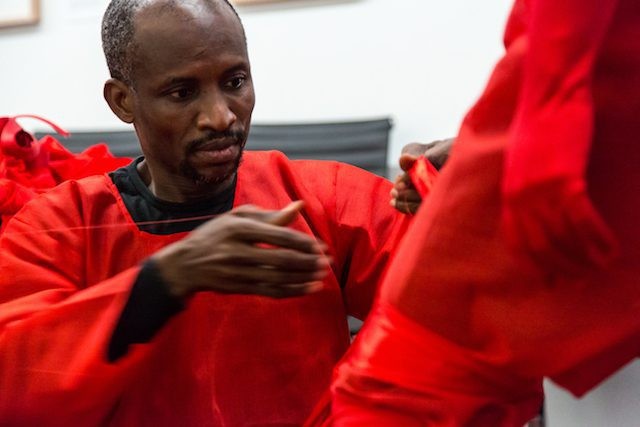Issa Samb "Joe Ouakam" All-Round Artist

28 April 2017
Magazine C& Magazine
5 min read
The sculptor, poet, painter and author Issa Samb from Senegal, best known under his artist’s pseudonym, Joe Ouakam, passed away on April 25, 2017 at the age of 71. He had the quality of a philosopher who, having dealt with the questions of his times, became detached from them to live life to the full. …
The sculptor, poet, painter and author Issa Samb from Senegal, best known under his artist’s pseudonym, Joe Ouakam, passed away on April 25, 2017 at the age of 71. He had the quality of a philosopher who, having dealt with the questions of his times, became detached from them to live life to the full.
People always felt that they knew him because his figure was so familiar and visible in the streets of Dakar where he regularly walked to feel the city’s breath and life. But this impression was quite wrong because Issa Samb was a mystery and an enigma. We never knew how to define him. Why? Because he was a sculptor, a painter, a poet, a playwright, an actor at the same time... He had several strings to his bow, which made him unclassifiable and yet rounded out as an artist, in the sense that his different personalities contained all these different aspects. Issa Samb is an emblematic figure of the Senegalese cultural scene as it has rarely been – iconoclastic, endearing, mysterious and rather controversial.
Born on December 31, 1945 in Ouakam, Joe Ouakam was the son of a Lebu dignitary. He was educated by his grandfather, a guardian of ancestral traditions for the community, and through this he acquired a talent for observation and for protecting images, imagination and symbols that conveyed the vision of an open, endogenous world. He knew how to decode their meaning. "All my life I have struggled with idea, and time. All the time I am exploring the soul, this well of profundity", he recalled in 2016 at the 12th edition of the Biennale de l’art africain contemporain (Dak’Art), in 2016, during which he received a special homage.
In the mid-1960s Issa Samb studied law and philosophy at the École nationale des arts and at the University of the Arts in Dakar. At that time a tendency associated with the former Senegalese president, Léopold Sédar Senghor, provided the shape and soul of the art movement known as the École de Dakar. Issa Samb started taking a different position from the moment his artistic personality began to form and assert itself.
Joe Ouakam openly criticized Senghor’s vision of political culture, denouncing the covert political desire to domesticate the arts. He wanted total respect for freedom as the foundation of artistic creation and he wanted artists to use that freedom to create independent structures and autonomous associations far removed from one-sided options. In this clearly dissident and deeply rebellious spirit at the beginning of the 1970s he launched the Laboratoire Agit-Art with the actor and film director Djibril Diop Mambéty (1945-1998) and other artists grouped together in a collective. Laboratoire Agit-Art was a movement of reflection on art and its relation to Senegal’s social life and politics.
The artist’s backyard was downtown Dakar. He lived there until four months before his death, in the midst of his works, of all kinds of documents (newspapers, letters, posters… ) and objects he picked up everywhere during his strolls around Dakar, when he loved feeling the city’s pulse and the beat of life. For over 40 years this galaxy surrounding Ouakam was like a permanent exhibition and became a real attraction for art lovers.
Joe Ouakam created many installations and live shows, and often played the multiple roles of author, actor and director himself – his last performance took place at the beginning of December 2016. He used beautifully posed gestures to explore philosophical questions about his own trajectory and that of his country, very often watched by passers-by who were involved without knowing it. In this process Joe Ouakam traced his unique route in opposition to the consensus of traditional exhibition places like galleries and other art spaces.
This does not mean that he was always against such places. He had exhibited works at various venues in Senegal and abroad. In 2010 Dakar’s National Gallery of Art devoted a retrospective to him. In the same year, the Senegalese musician and filmmaker Wasis Diop organized an exhibition, La Cour de Joe Ouakam in the artist’s own studios.
Joe Ouakam’s exhibitions – solo or group shows – began at the beginning of the 1980s. Between 1981 and 1998 he exhibited in different spaces in Harare, Dakar, and London (Galeries Tenq, Combar, Galerie 39, and Centre culturel français, Galerie des Quatre-Vents with Viyé Diba, Africa 95 Whitechapel Gallery, London…).
Issa Samb appeared in many fiction films and documentaries, including Hyènes by Djibril Diop Mambety (1992) and Impressions et La fête silencieuse by Jean-Michel Bruyère (1999). He also appeared in An Alè, a documentary film about the eponymous Haitian artist Toto Bissainthe (1990). The books he authored include Poto-poto Blues (Éditions Feu de brousse, 2004), Les crickets (Éditions Feu de brousse, 2009), L’écume du Soleil (Abis édition, 2016).
Issa Samb’s multidisciplinary way of working had another important dimension. According to the musician Wasis Diop, it placed Issa Samb in "a special constellation" that included his companion Djibril Diop Mambéty and his disciple Bouna Médoune Sèye.
.
Aboubacar Demba Cissokho, cultural journalist who lives and works in Dakar.
Read more from
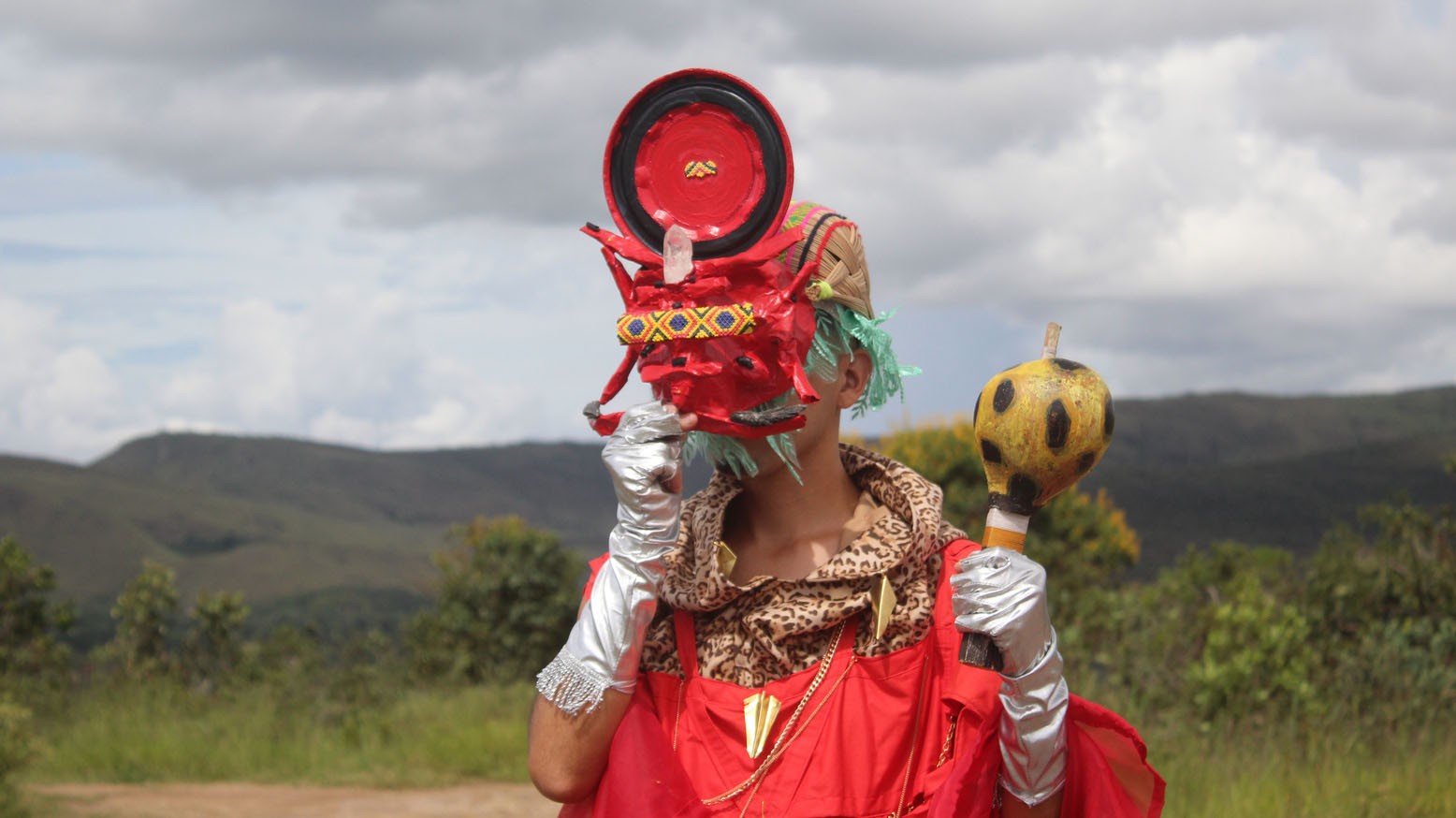
Biophillick: Connecting Ancestries Through Technology
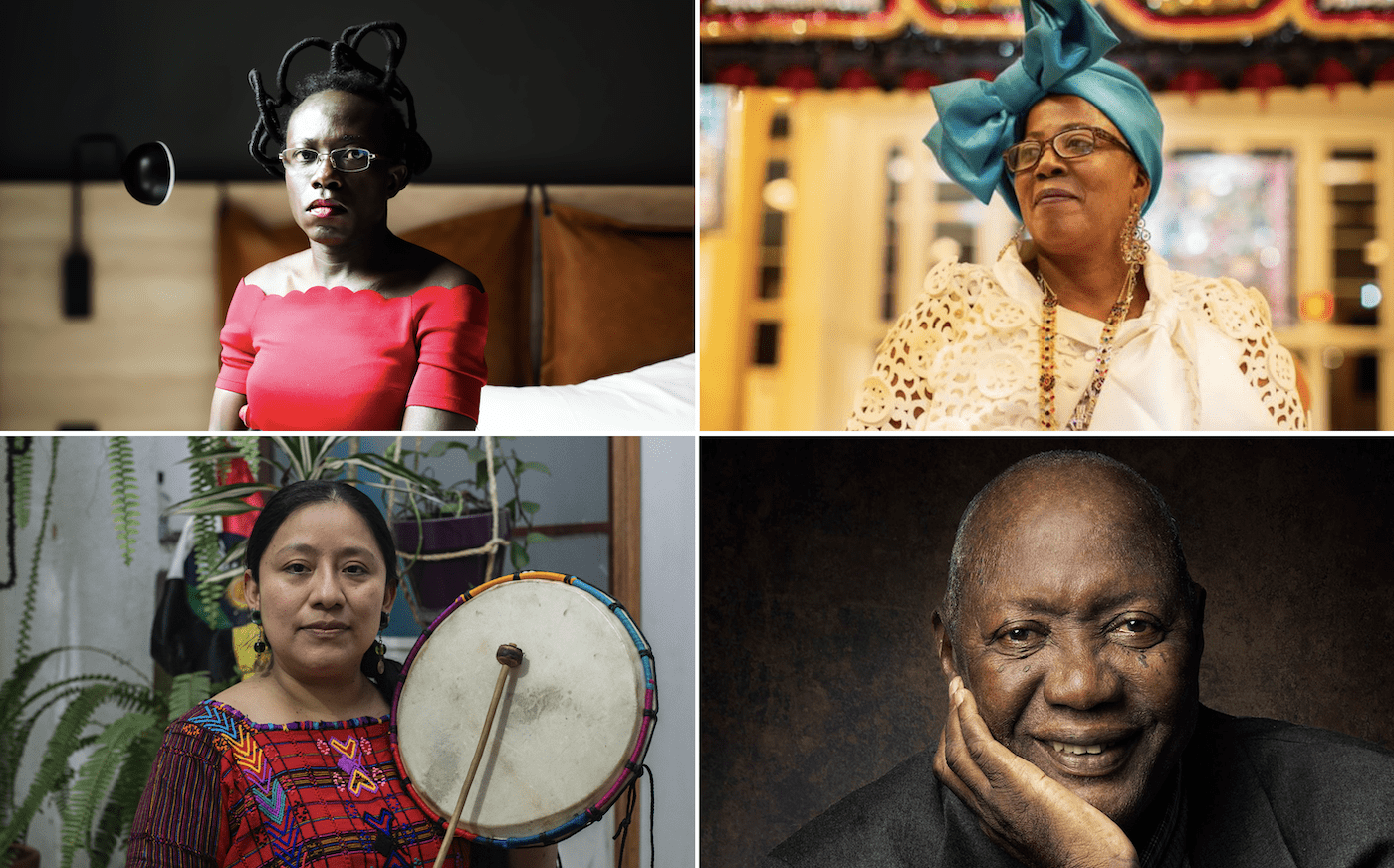
Prince Claus Impact Award Presented to Six Artists from Diverse Disciplines
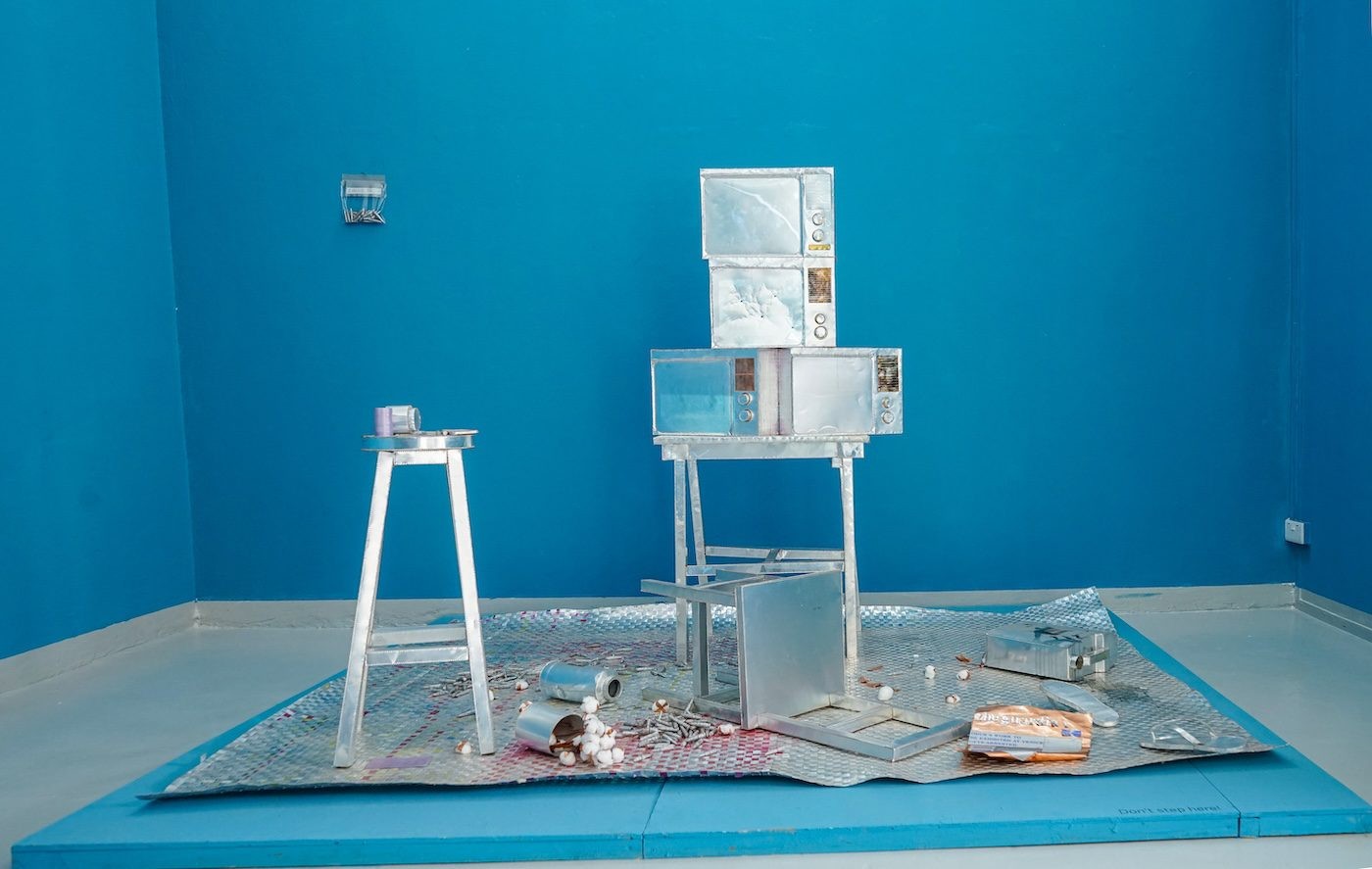
Odur Ronald: ‘Why is it easier for raw cotton to reach European capitals than for Ugandan people to travel anywhere?’
Read more from
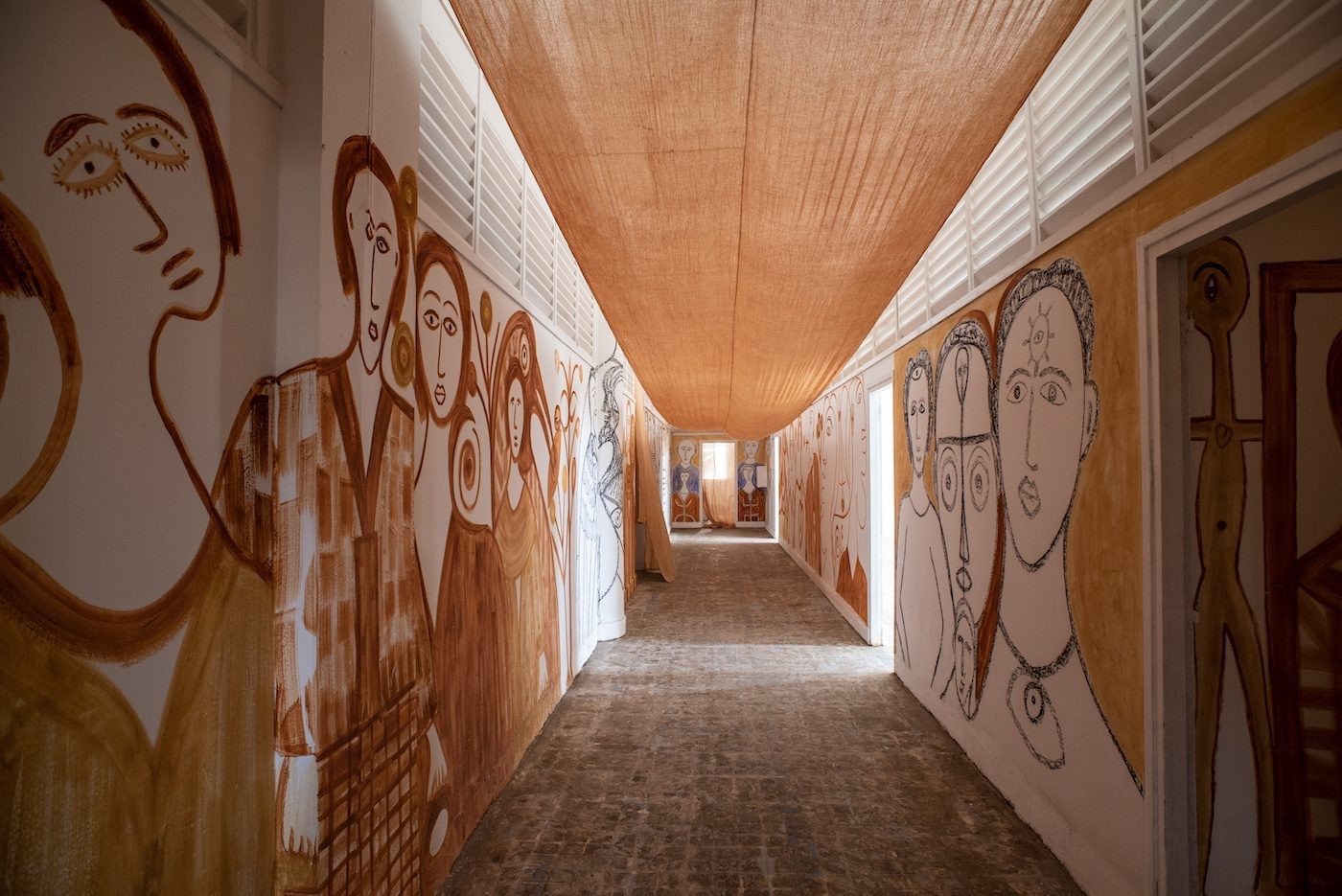
Alioune Diouf: Ubeku – Ouverture
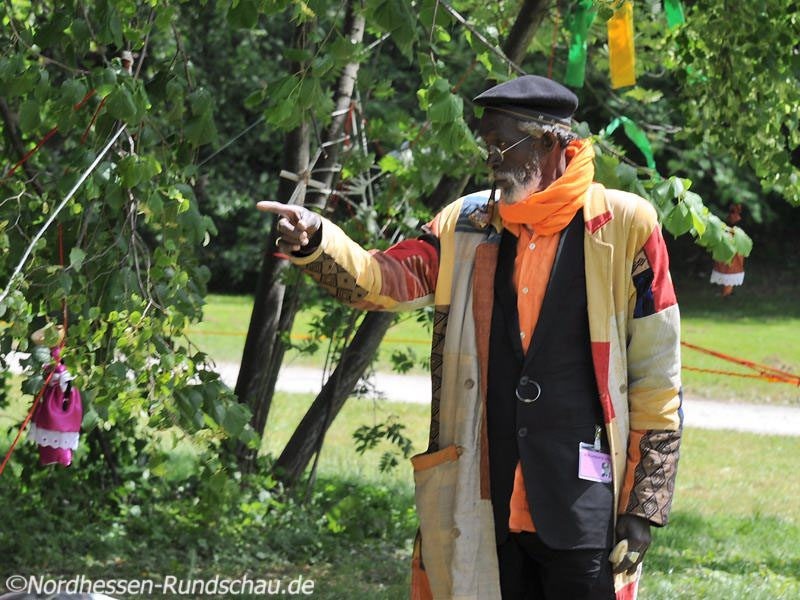
Issa Samb (1945-2017)
